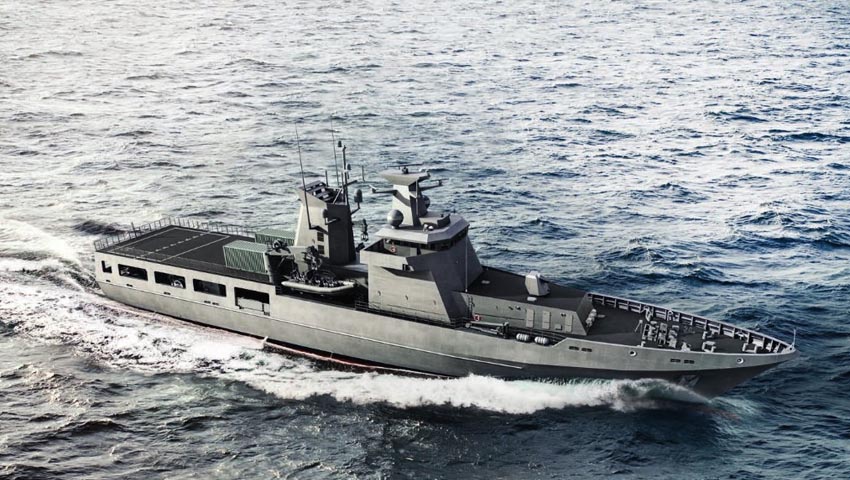In strategy circles, much has been made in recent years of the pivot away from the Asia-Pacific towards an Indo-Pacific worldview – which Professor Rory Medcalf characterised as “the logic that Australia’s region was changing to a two-ocean system”. All but accepted as canon in think tanks and university lecture halls around the country, why are we then surprised to see China similarly setting its sights on the Indian Ocean?
To continue reading the rest of this article, please log in.
Create free account to get unlimited news articles and more!
A two-ocean system
It is no secret that maritime power projection and control of the seas plays an important role in Australia's geopolitical future. As an island nation – and a long-term key feature of the historical APAC region (predominant in strategic discourse from 1980 to 2010) – much of our ability to project diplomatic sway is dependent on our seafaring capabilities.
Cited recently in ASPI's The Strategist, Professor Medcalf gave a succinct definition of the Indo-Pacific doctrine, which seeks to expand the traditional APAC flashpoint to encompass broader south-east Asia, India and (conveniently) several major European powers.
"The logic that Australia’s region was changing to a two-ocean system … with China turning south and west and India turning east, accorded both with the evidence and the need to define Australia’s place in the world," he said.
While critics of the Defence White Paper suggested it lacked strategic vision, the years that have passed since have shown the plan it envisioned to follow a foreign policy that is decidedly 'more Jakarta, less Geneva'.
The Indian Ocean has long since surpassed the Atlantic and Pacific oceans as the world's busiest trade corridor; moreover, Australia's positioning at the nexus of the bloodlines of the 'Asian century' has certainly not been lost on policymakers.
In the context of sovereignty disputes in the South China Sea (SCS), attempts to assume a confident regional position – which have taken the form of, for one example, Operation Gateway – are necessarily construed by Beijing as steps in a hawkish direction.
Medcalf's definition, then, stands in stark contrast to those given by some of his contemporaries. He understands that as we look west, seeking to draw major NATO and ASEAN allies into the fold, so too will China attempt to project power southwards to counterbalance this influence in the region. Reports from the national broadcaster on Monday of a Chinese surveying ship charting territory off the WA coast, close to Christmas Island, cannot be surprising to the informed observer.
Scientific research, or prying eyes?
Xiang Yang Hong 01, a ship equipped to conduct deep-water oceanographic surveying missions, spent a period of several weeks cruising near Christmas Island and the Australian mainland.
According to the ABC, a source within the Australian Border Force stated that the vessel was "undoubtedly" charting waters frequented by Australian submarines, as they pass to and from the South China Sea.
Though the official in question did note that the Chinese ship stayed in international waters, they also noted that a significant length of time was spent in waters not far from Naval Communication Station Harold E. Holt.
Though entirely legal, baseline data collected from oceanographic surveys can play a military, as well as scientific, role. Anything from measurements of ambient background noise levels to the salinity and temperature of thermal layers can contribute to a robust understanding of the maritime operating environment.
Tellingly, the Xiang Yang Hong case follows a similar incident last year, where several Chinese research vessels plotted waters close to Papua New Guinea just weeks after US Vice President Mike Pence announced a coalition partnership to redevelop the ageing Manus Island naval base.
The link is almost too conspicuous to miss.
Though these sorts of oceanographic expeditions may seem somewhat quotidian in comparison to Soviet surveillance operations maintained in the Pacific throughout the Cold War, retired Rear Admiral James Goldrick has actually compared the two directly in terms of both scale and intensity. The main takeaway, however, pertains more to 'spheres of influence' than specific programs in any case.
The Lowy Institute's Melissa Conley Tyler has been particularly vocal about the steps Australia has taken to integrate our allies into a west-facing outlook.
She notes the term 'Indo-Pacific Asia' has been included in two Defence White Papers, multiple formal foreign policy submissions, and that politicians from Prime Minister Scott Morrison to Defence Minister Linda Reynolds now pepper it liberally throughout public discourse. In terms of actual policy, Australia has moved towards:
- Australia's largest annual naval deployment (Indo-Pacific Endeavour);
- Australia's bilateral naval exercise with India (AUSINDEX); and
- Military rotations in the NW Indian Ocean/MENA (Operations RESOLUTE/MANITOU).
Each of these represents a recent and significant step in escalating our presence in the Indian Ocean region, and moving beyond words to action. However, perhaps the most important of these has been the investment into ADF build-ups along the country's western and northern approaches.
Your thoughts
As usual, it pays to look to our cousins across the Atlantic for insight into broader Sino-Western relations. Though the omnipresent US Navy has not had to make much in the way of tangible policy changes to embody a pivot towards 'IPAC', US President Donald Trump and his administration's embrace of the shift in nomenclature has been total.
Nowadays, the term Indo-Pacific appears uniformly throughout national security strategy and companion national defence strategy, at the expense of the former.
Fallen out of fashion, the term APAC is all but a dirty word in Western political circles these days. Perhaps most tellingly, the US Pacific Command was even renamed in 2018. The new moniker? The US Indo-Pacific Command.
So long as Australia and the US continue to view the world through an 'Indo-Pacific' lens, it seems logical that this incident could be a harbinger of things to come.
Get involved with the discussion and let us know your thoughts in the comments section below, or get in touch at

 Login
Login







